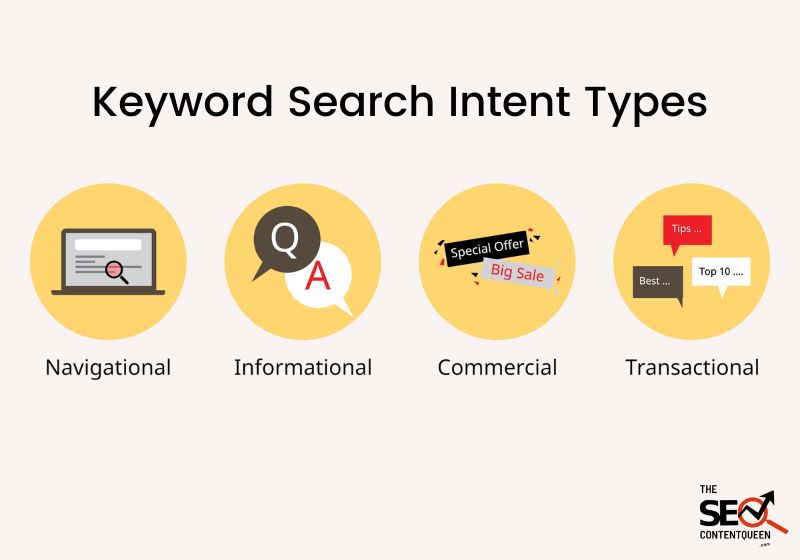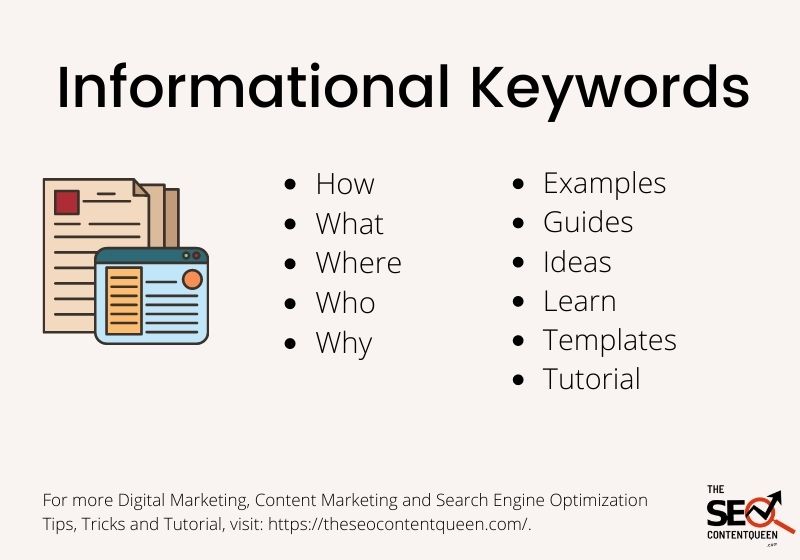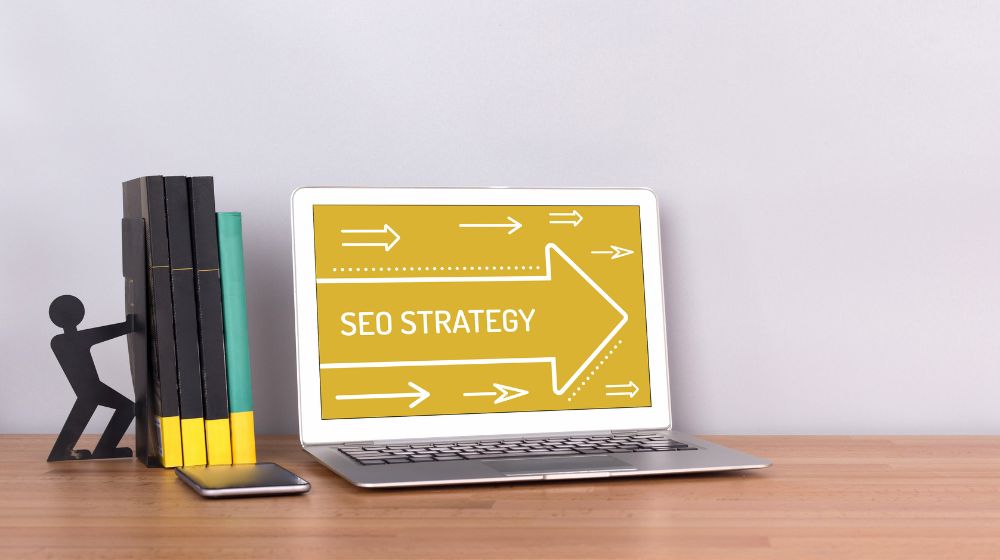The best way to optimize your website for search engines is to understand the keyword search intent. So, what is Keyword Search Intent? Keyword Search Intent is the intent of the user’s keyword on a specific search.
- What are they looking for when they type that word or phrase into Google?
- Are they looking for a product to buy, or are they just doing research?
If you can understand the searcher’s intent, you can better optimize your website to match their needs.
Related: How to Check Keyword Difficulty: A Comprehensive Guide
Keyword Search Intent SEO

What Is User Intent
Did you know there is a big difference between Keyword Search Intent and User Search Intent?
Keyword search intent is what users intend to find when they type a keyword or phrase into a search engine.
On the other hand, user search intent is what the user wants when they land on your website.
To optimize your content for both intentions, you need to understand what they are and how to cater to them. This blog post will discuss the differences between Keyword Search Intent and User Search Intent and how you can optimize your content for each.
Keyword Search Intent: Keyword search intent is what users intend to find when they type a keyword or phrase into a search engine.
To cater to this intention, you need to ensure that your content includes the keywords or phrases the user is searching for, and you can include them in your title, content body, and keywords.
User Search Intent: User search intent is what the user wants when they land on your website.
To cater to this intention, you must ensure that your content is relevant to what the user wants to find. For example, you can include relevant keywords in your title and the body of your content. You can also use user search intent to your advantage by including calls to action that encourage the user to take the next step, whether it be subscribing to your newsletter, downloading a white paper, or making a purchase.
By understanding and catering to Keyword Search Intent and User Search Intent, you can optimize your content to be more effective and reach a wider audience.
4 Main Types of Search Intent

There are four main types of keyword search intent:
- Informational Intent: The user is looking for information on a topic. Keywords associated with this type of intent include “how to” and “what is.”
- Navigational Intent: The user is looking for a specific website or web page. Keywords associated with this type of intent include the name of a website or product.
- Transactional Intent: The user is looking to purchase a product or service. Keywords associated with this type of intent include “buy” and “order.”
- Commercial Investigation Intent: The user is comparison shopping or researching a product before making a purchase. Keywords associated with this type of intent include “review” and “compare.”
Informational Keywords

Keyword Search Intent Tips
To optimize your website for keyword search intent, you need to match the content on your website to user intent. User intent is the intent of the searcher.
Here are some tips:
- If you are selling a product, optimize your website for transactional keywords.
- If you provide information, optimize your website for informational keywords.
How to Analyze Keyword Search Intent
Google’s Keyword Planner is a good place to start.
- Just enter a keyword or phrase into the tool and see what comes up.
- Look at the search results to see what type of content Google returns for a particular keyword.
Once you understand the intent of a particular keyword, you can start optimizing your website for that keyword.
Optimizing your site for a keyword means creating content that matches the searcher’s intent and using the keyword throughout your website, including in the title, meta tags, and the body of your content. Optimizing for keyword search intent can ensure that your website appears in the search results for the right reasons. It will help you attract more visitors to your website who are looking for what you offer. And that can lead to more sales and conversions for your business.
Matching search intent is one of those must-do things to show search engines that your page will fulfill its goal of delivering the most relevant results for any given query. Search intent represents the reason behind a searcher’s query.
While it might sound like you’re trying to satisfy Google, what you’re doing is learning what you need to do to satisfy the searcher’s intent.
Identifying search intent is usually quite easy. First, you must search for the keyword you want to rank for and then analyze the top-ranking results. And the top-ranking results are a great proxy to understand search intent because Google understands what searchers want, probably more than anyone else.
3 C’s to Check to Analyze Keyword Search Intent
Here is a simple 3-prong formula you can use to analyze Keyword Search Intent:
- Content-Type
- Content Format
- Content Angle
Content-Type
Categories:
- Blog posts
- Videos
- Product
- Category
- Landing Pages
Check the dominant type of pages for the query “best golf shoes” are blog posts.
Content Format
Content Format applies more to blog posts and landing pages. A few common blog formats you’ll see are:
- How-tos
- Step-by-step tutorials
- List posts
- Opinion editorials
- Tool or Calculator for Landing Pages
For the query “best golf shoes,” you’ll see that all of the top results are listicles, which makes sense because the word: best, implies that there will be Comparison Reviews.
Content Angle
The content angle often depicts the “benefit.” It’s your hook as to why someone should click and visit your page.
For “best golf shoes,” you’ll see that every post has gone with the “freshness angle,” which is evident based on the current year being in the titles. In my opinion, this is the least important and often least consistent among top-ranking pages. Now, this is just one example of search intent for a keyword.
Let’s try a few more examples to drill into this concept.
The first example is for the query “how to swing a golf club.” The dominant content type is blog posts. But you’ll also notice that a YouTube video ranks ahead of the blog posts.
So this tells us that it may be worth creating both a blog post and video to get two different spots in the search results potentially.
As for the content format, they’re all how-tos. And seeing as the nature of the topic would require a step-by-step procedure, that’s probably the type of content you want to use too. But, again, you can confirm this by visiting some top-ranking pages.
Now, with the content angle, “for beginners” or “basic” seems to be the right way to approach the topic.
The second example is for the query “golf clubs.” Again, looking at the SERP, you’ll see that they’re all eCommerce category pages – this tells us that when people search for this query, they’re likely in shopping mode.
Since content format applies mostly to blog posts and landing pages, it wouldn’t be applicable here since we’re looking at eCommerce category pages.
The content angle seems to be mostly about deals, so saving money on golf clubs.
Alright, the final example is for something like “golf bags.” Looking at the SERP, you’ll see something a bit different. We have a mixed SERP.
Content-type for the top-ranking page is an e-commerce category page. Then we have a couple of blog posts on the best golf bags.




Comments